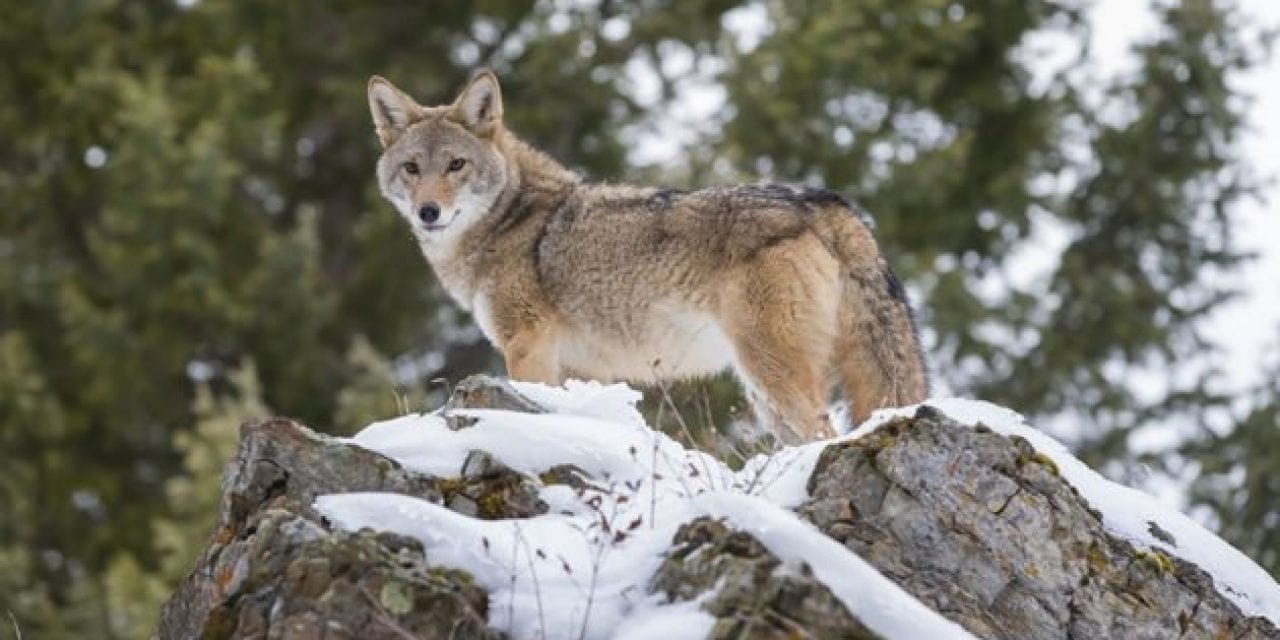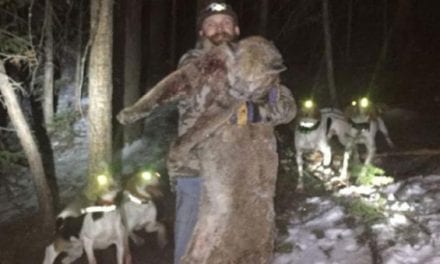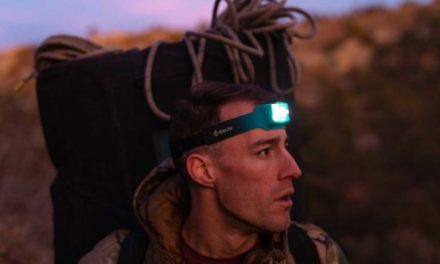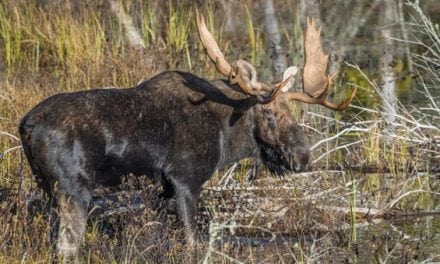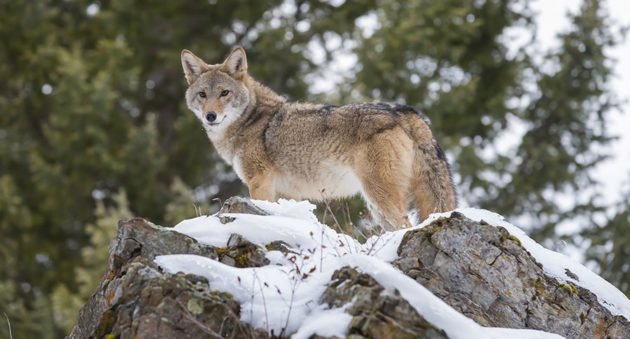
Here are some useful facts about this brazen member of the canid family.
There’s a lot outdoorsmen and women have come to learn about the Canis latrans, or the common coyote.
Sometimes those things are interesting, other times they’re frustrating. Some hunters, specifically deer hunters, truly despise the predators they’d refer to as dirty dogs (or worse).
We have found that adult coyotes are shifty, cunning, and ruthless animals that can run in family groups or be solitary hunters. They attack and eat some of our favorite game animals. Sadly, even our pets at times.
Coyotes are omnivores and invariably opportunistic feeders. They will gladly gobble carrion as quickly as they will small rodents like voles or mice. These canids are native to North America, but smaller than their close relatives, the gray wolf, the eastern wolf, and the red wolf.
Where Are Coyotes Found?
Coyote populations are found around the United States and Canada, dwelling in the deep wilderness, well-populated urban areas, and just about everywhere in between. Their subspecies have stretched all the way from Alaska to Central America.
They can thrive in arid desert areas, vast grasslands, mountain ranges, and hardwood forests.
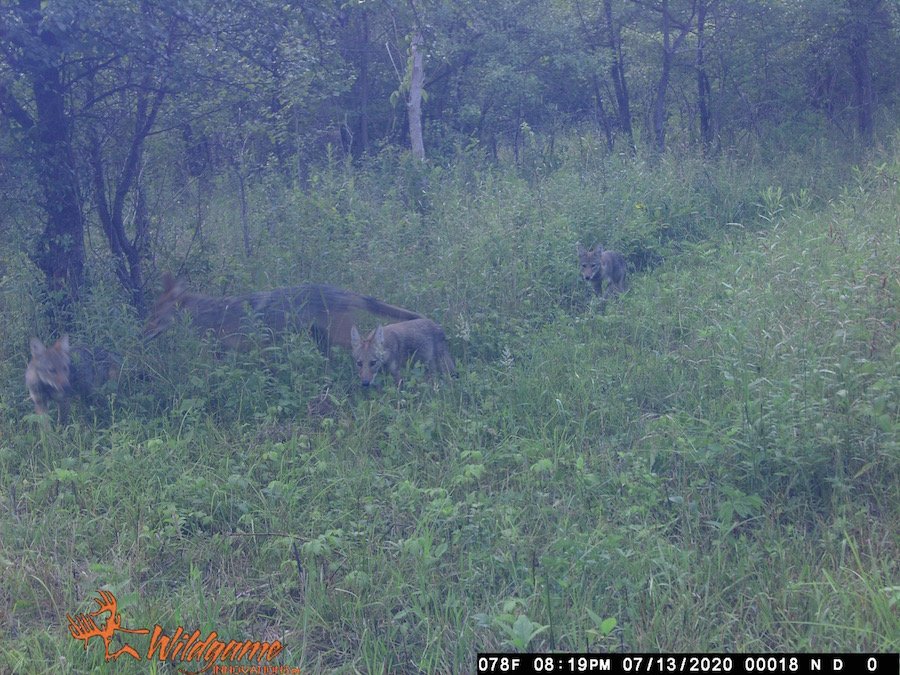
What Do Coyotes Eat?
The bushy tailed scavengers are both plant and meat eaters whose common food (and sometimes 90% of their diet) is small animals. Rabbits, hares, birds, snakes, fish, crustaceans, and insects are all on the menu. It’s the terrestrial mammals, like mice, voles, groundhogs, prairie dogs, gophers, and chipmunks that are often the favorite targets of lone coyotes.
When they hunt in packs, coyotes have been known to achieve bigger goals, like taking down wild turkeys, adult deer, cow elk, pronghorn, and wild sheep. This is often where they begin to catch the ire of dedicated hunters.
Though a coyote pack is capable of such feats, it’s more common that they aim for more realistic meals. They’re particularly effective in killing and eating young, more helpless animals, and it’s the whitetail or mule deer fawn that seems extra vulnerable to a coyote’s wrath.
As with any wild predatory animal, coyote populations hinge on their food sources, and when their target animals are plentiful, there will be a lot of coyotes in the area.
Case in point: in years when we see a terrific deer breeding season by the amazing amount of fawns in the spring, twins and sometimes even triplets, female coyotes will have correspondingly large litter sizes.
Alternatively, coyotes also eat a share of fruits, vegetables, leaves, and roots. They won’t think twice about eating easily accessible human garbage, and they’ve also been noted digesting grains, greens, and domestic animal droppings.
How Big Are Coyotes, and What Do They Look Like?
Beka Garris is on fire!
Posted by Predator Hunting on Monday, December 7, 2015
Coyotes range in size from 15 to 45 pounds and can sometimes be over 50. They are anywhere from 30 to 40 inches in length, quite a bit smaller than their cousins the gray wolf.
Their noses are black and usually less than one inch in diameter. They have large ears in relation to the head, slightly long legs, and relatively small feet.
The coloration of coyotes can vary, even within the same region, from grayish brown to a yellowish gray around the shoulders and upper back. The throat and belly are usually a whitish color. The legs and feet, sides of the head and muzzle can be brown to reddish brown.
Why Do Coyotes Howl?
Coyote howling in the early morning in Jasper National Park
Posted by John Rollins Photography on Friday, April 17, 2015
Coyotes are indeed the most vocal of all the North American wild mammals. While they use three distinct vocalizations–the squeak, distress call, and the howl–it is this last of the group that humans know most famously.
Howling serves several purposes, most often to simply announce their presence to other members of the pack. It’s also used as a territorial warning to other packs, and sometimes as an assembly call.
Coyotes are generally nocturnal, although it’s not all that unusual to see them during the daylight hours. It’s usually after dark when their chorus of howls begins, and sometimes it can be quite unnerving for those that aren’t used to it.
While it is said that coyotes don’t form packs to the same level as the wolves, when you start to hear them howling and moving in high numbers, you can’t deny they’re together and busy with something. That sounds like pack mentality to me.
Coyotes and Humans
midwest coyote? nope that's frederick county maryland with a house cat in its mouth. coyotes are here to stay in the urban fringe
Posted by Patriot Natural Resources on Tuesday, May 8, 2012
While coyote attacks are rare, they do happen, usually when urban coyotes cross paths with people.
Coyotes can be beneficial, since they keep down the numbers of rabbits and rodents that can overrun an area without check. But they also host a number of diseases, such as rabies, and they are often seen with mange.
If you ever encounter a coyote, keep your distance but stand tall, maintain eye contact, and do not turn your back. Even more importantly, do not run away, as that can trigger a chase and attack response and you’re instantly at a disadvantage.
Instead, haze the coyote. As the Urban Coyote Initiative suggests, it’s the best thing you can do for the animal, and permanently scaring them away is the main objective.
Always keep pets on a leash, keep control of them, and avoid known coyote areas in general, especially after dark.
If you’re looking to take a more proactive approach and begin hunting coyotes, there’s plenty you can do to tip the scales. Just search this site for “coyote hunting” and you’ll find no lack of tips, gear suggestions, and entertaining examples.
Dealing With Coyotes
Coyotes are generally stealthy and quite secretive. Knowing that there is a population of them around or near your home can be intimidating, but it shouldn’t be frightening if you take the right precautions.
Coyotes keep their pups near the den while they are raising them during they first year so that they aren’t killed by predators and other competitors such as wolves, mountain lions, and particularly humans.
As a species, those are the only real predators or enemies that coyotes have. Your best bet is a vigilant attitude along with a knowledge of what you are up against. Try calls, which have proven deadly for many hunters, or predator decoys. Use a precision-based long range hunting gun to accomplish shots from a distance.
Keep an eye out for scat and tracks in your area along with other signs that you may have a coyote population nearby.
And really, keep an eye and ear on Wide Open Spaces, because we’re consistently sharing coyote hunting information that can help out a lot.
Looking for a little more or even hot lunch for your hunting blind? Follow my webpage, or on Facebook and Twitter.
NEXT: 6 WAYS TO MAKE A DEER STOP IN THEIR TRACKS
WATCH
The post What Do Coyotes Eat? Facts and Info About Nature's Trickster appeared first on Wide Open Spaces.

